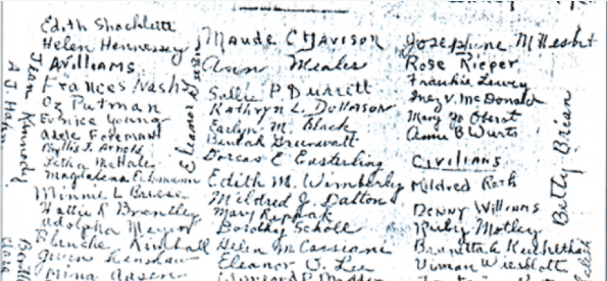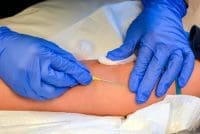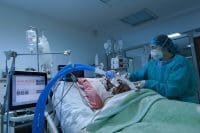One of World War II’s greatest untold stories began on April 8, 1942 when Lt. Gen. Jonathan Wainwright, the commander of the U.S. Army in the Philippines, ordered the evacuation of military and civilian nurses to the island of Corregidor. A month later, Corregidor fell and 77 American nurses were captured by the Japanese, becoming the largest group of female prisoners of war.
Known as the “Angels of Bataan and Corregidor,” the group continues to hold the distinction of not losing a single member during their three years in the Santo Tomas Internment camp.
“It is not that they were some of the first women POWs that made them special, but that they were average American from average towns and they survived in a horrific environment while never losing their commitment to serving their patients,” says Bernice Fischer, granddaughter of U.S. Army nurse Mary Bernice Brown-Menzie.
Fischer tells Fox News her grandmother entered the prison camp in 1942 weighing 130 pounds but had dropped to 75 pounds when she was liberated in February 1945.
Many of the women sought assignment in the Philippines prior to December 1941 when the Pacific was relatively peaceful and where they enjoyed dances and other luxuries.
But that changed after the Japanese bombed Pearl Harbor and then launched an invasion of the Philippines. For months the nurses faced constant attack by Japanese planes, deteriorating conditions and dwindling rations.
“There were 77 American women who became POWs and there were 77 who walked out in 1945. This is unprecedented, particularly for women who had no formal survival training,” says Elizabeth M. Norman, who chronicled the nurses in the book, “We Band of Angels: The Untold Story of American Nurses Trapped on Bataan.”
Read more here.



















1 Comment.
I am a retired nurse and just found out 2 of my aunts were part of the the Bataan death march. My name is Major Judy Smith, I have a cousin buried on the USS Arizona his brother was able to swim to safety. My family never shared any of this with me until I was able to contact through Ancestry. I do not have the funds to get all the data so I am trying my best to do this on my own. My name is Major(ret) Judy Robison so here goes I was wonder it there might be data somewhere I could search to find out their names. Robison would have been their last name it gets spelled wrong but the correct spelling is Robison, My father served during WWII he joined at the age of 15. I would imagine it would have been not have been hard to fake BC.( My MZJUDYA@AOL.COM,)803-606-
5884, 125 Athena lane, Lexington, SC 29072, U.S. Army served 28 years started out as a PVT to SFC then 2lt to Major. Served in combat Camp anaconda, Balad, Iraq. I would appreciate any data you might help me with.